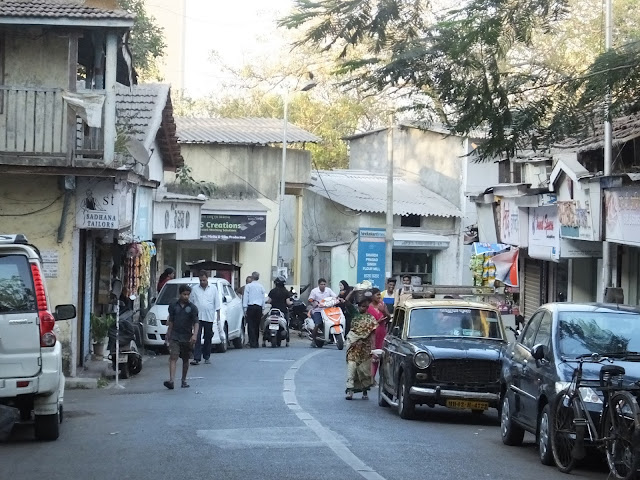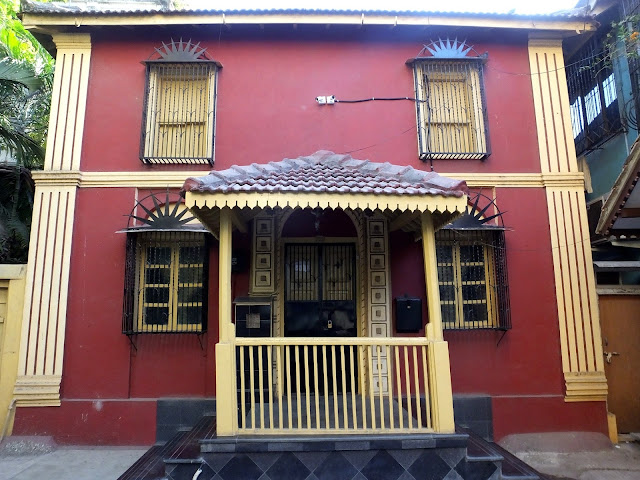Matharpacady: A quaint little East Indian village in Mazgaon.
Mumbai the mega metropolitan city was once a group of seven islands is something that we all know about. The seven islands which constitute Mumbai were home to communities of fishing villages and little hamlets scattered all over. They are chapters of a glorious history that endowed us with such rich heritage and architecture. Mazgaon or Mazagon - part of South Mumbai is one of the oldest suburbs of Mumbai. The original inhabitants were Agari (salt workers) & Koli (fisherman) tribes. Mazgaon has a rich history. It influenced several communities which makes it even more interesting.
In heart of this sprawling suburb of Mumbai lies this quaint village called Matharpacady or Mathar-Pakhadi which was originally a colony of East Indian Catholics but over a period of time came to include many Goan and other families. The village is self-contained with artistic wrought iron and wood bungalows, art decor, sprawling porches, verandas, and altars. It boasts some of the city's oldest and quaintest houses.
Most of the houses in these quiet, narrow inviting lanes were built almost three generations ago. Many are older than their oldest residents.
As I wander through the cloistered lanes, I came across one gentleman who smiled at me and asked " Are you on a visit? Go see that cross over there and then take a right to see the village well" He said.
In the middle of the village lies the famous Matharpacady village cross. The holy cross oratory was erected in 1875 through the initiative and land donations from local residents. In 1896 when Mumbai was overrun by plague, Thousands died and many fled the city. On May 1st the villagers gathered around the Holy cross oratory and asked that the scourge spare them. Not a single life was lost in this village. More than a hundred and twenty years later, the Cross Feast of St Rock is still celebrated on May 1st every year by grateful descendants of fortunate fathers.
The village also boasts of its own well, which was used for rituals during weddings, preserved even today covered from the top.
Another very interesting thing about Matharpacady is that it is home to a handful of "kudds or Cudds" in Mumbai. Mumbai's mini Majordas or Calangutes. It literally means "rooms" in Konkani. They are dormitory-style clubs where Catholic migrant workers from Goa can stay for few rupees a month, while they look for work or if they are passing through Mumbai. Each kudd is named after a Goan village and is open to Catholic men or family from that same village only. The condition for the stay in these kudds was rosary every night and lights off at 10 pm !! On my visit, I did see few clubs in the village like Club of Paroda, St Lawrence club of Arrossim, the club of N.S Dos Remedios, etc but they were all closed either permanently or due to lack of visitors.
More on Kudds life in Mumbai in the link (Kudd life)
More on Kudds life in Mumbai in the link (Kudd life)
Although there are a handful of entry points from the main road into this enclave, On Ram Naik Marg just opposite one of the entry points lies a defining landmark of the area. The "LIONS DEN". A Portuguese-styled bungalow owned by Mr. Samuel Leao, Built-in 1892 by the current owner's grandfather. The two yellow lions on the gate of the house gave its name - Lions Den.
The narrow lanes opposite Lions Den hold the oldest Portuguese-style homes in the city complete with colorful facades, wooden staircases, and open balconies. Joseph Baptista - the freedom fighter and close associate of Lokmanya Tilak was a resident of this village. The Baptista family still has two houses and are still the residents here.
A township built nurtured and populated by East Indians once, Matharpacady is an enchanting Portuguese hamlet in the heart of Mumbai city distinguished by its Moorish architecture, split level colored houses with wooden staircases, and sloping brick roofs. Even though Matharpacady has been accorded grade III heritage status by the government which means that it is illegal to alter any residence without sticking to its original plan and materials, The land mafias have their eyes on this prime locality. Matharpacady is changing and changing slowly, too delicate to handle the onslaught of urbanization. The reason few residents have moved abroad and are willing to sell their assets while there are some who are unable to bear the cost of continuous preservation.
We of the maddening crowd are scarcely aware of the existence of such islets of serenity. Matharpacady is last among the few remaining iconic islets which are still surviving in the Metro city of Mumbai. How far will they continue? Time will tell !!!!!!
How to reach: It can be reached from Byculla, exit Byculla station east, take Seth Motisha lane & Ram Naik Marg. From Dockyard road station, exit on the west side, ask for Gun powder lane, and then Ram Naik Marg.
How to reach: It can be reached from Byculla, exit Byculla station east, take Seth Motisha lane & Ram Naik Marg. From Dockyard road station, exit on the west side, ask for Gun powder lane, and then Ram Naik Marg.





























Grew up in this neighbourhood and use to walk past the village to bus stop from home. Fond memories. Never knew the history of the place. Thanks for the research. The place is also known as 'saaheba chi galli'.
ReplyDeletelovely... Thanks
DeleteYes. You are correct
DeleteLovely nostalgic old world charm locality . Beautiful write up .
ReplyDeleteThank you
DeleteVisited Matharpacady after reading this article! Living in Mumbai for 35 years but still was not aware of this gem! Thanks a lot, lovely article.
ReplyDeleteGlad that you liked my post. Hope you had an enjoyable time roaming the quaint and narrow alleys of the gaonthan
DeleteDoes any one have any historical information regarding the Nawab Tank Bridge Rd, Dockyard, Wadi Bandar, Mazgaon. I would love to get some information. Its a home where my mum lived with her family. A few of my relatives still live there. please email me at meghnaporwal75@gmail.com
ReplyDeleteWell written article, hardly knew about this village despite being an East Indian, till a friend mentioned and I googled to search. I look forward to visiting this lovely village. Very wells summarized. Thanks.
ReplyDelete